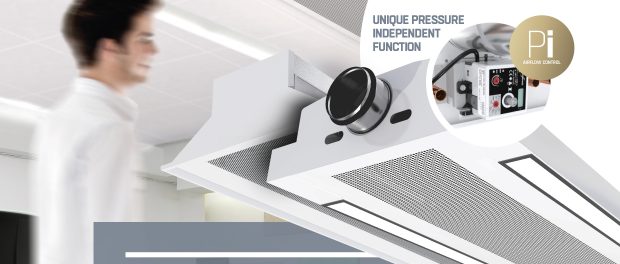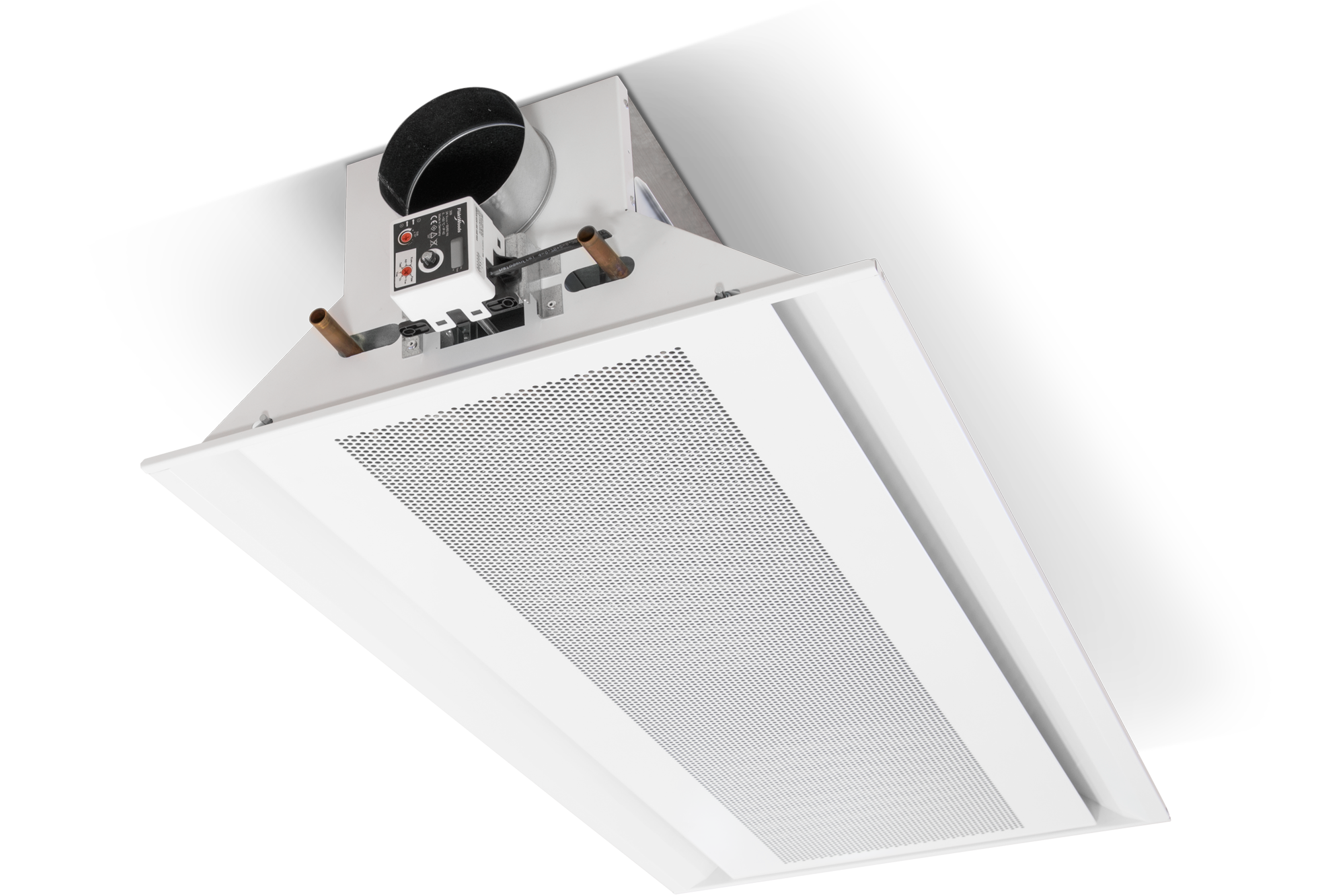Driving Efficiency with the FläktGroup Wega II Chilled beam

An increase in demand for energy efficient systems has followed the implementation of more stringent building energy regulations around the world. As a result, specifiers for buildings such as hotels, offices, healthcare facilities and educational institutions are looking at alternatives to conventional HVAC systems.
The chilled beams market is currently growing at the expense of traditional FCUs, mainly because they are more energy efficient. In fact, it is estimated to grow by a significant 6.4 per cent a year up to 2027 – and Western Europe, which currently has the largest market, is expected to reach a value of over US$ 180 million by this time.
So, what do those responsible for the design, maintenance and management of commercial buildings need to know about chilled beams?
Driving efficiency
Chilled beams offer savings of up to 40 per cent over traditional air conditioning systems. Chilled beams operate at higher water temperatures than fan coil systems; for example, 14oC flow compared to 6oC respectively.
This means the chiller will perform more efficiently for a chilled beam than for a fan coil, because the lower the chilled water temperature, the higher the energy use.
Easily maintained
The installation and maintenance requirements for chilled beams are low. There is no need for condensation protection, because typically the chilled water temperature is above a room’s dew point (i.e. where condensation is formed). And since a chilled beam coil is dry, it doesn’t require a filter. Equally, as chilled beams have no moving parts, cleaning requirements are far less onerous by comparison.
Dynamic flexibility
FläktGroup have developed the Wega II chilled beam, an active system for ventilation, cooling and heating developed for the high demands of the modern, dynamic office.
With Wega II it is possible to change an office layout without having to move or install new chilled beams; only simple adjustment and reconfiguration of the FPC vanes and the variable position nozzles is required. Even the Pi functionality (the Pi function is pressure independent and makes the product suitable for many types of ductwork system) is designed for change; it can be easily moved with the high occupancy rooms by disconnecting, reconnecting and resetting the values.
The enhanced design includes variable geometry nozzles, to offer the widest choice of airflow settings. Nozzle change can be actuated to automatically adjust ventilation flow rates to occupancy levels, regardless of pressure changes in the ductwork system.
For information visit www.flaktgroup.co.uk


